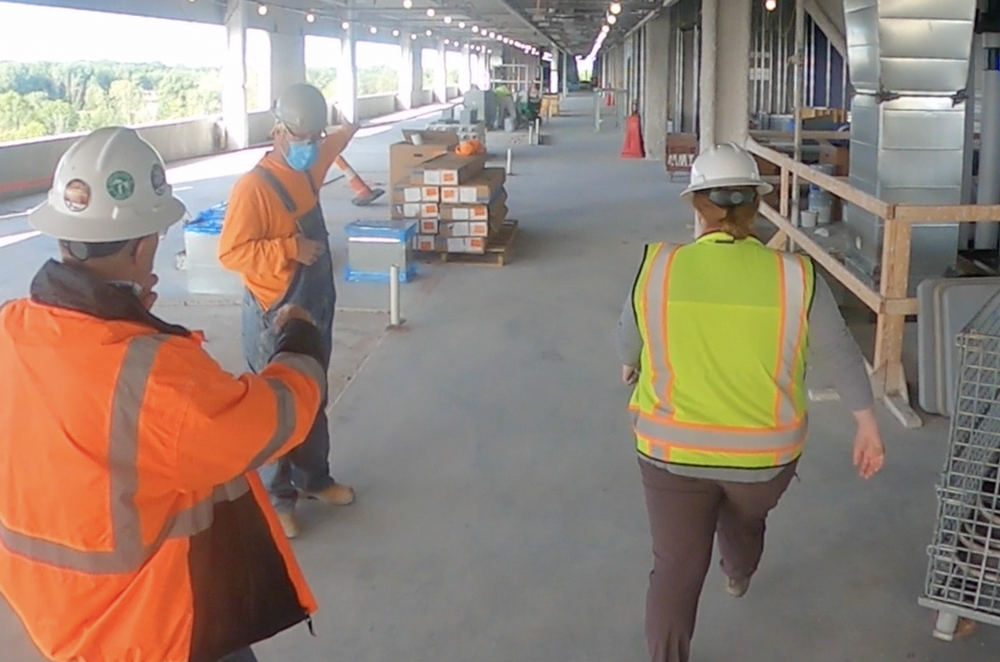
By Scott Wagner
A crisis is defined as “a time of intense difficulty, trouble or danger.” On a construction jobsite, a crisis – and how it’s managed – could literally be the difference between life and death. It’s part of the reason why a large part of the annual Construction Safety Week activities at Barton Malow from Sept. 14-18 consisted of establishing, refining and practicing crisis incident management plans across all of our jobsites.
As an annual participant in Construction Safety Week, we’ve always found value in hosting a week’s full of safety-related demonstrations, activities, stand-downs and morale-boosting events on all of our project sites to reaffirm our commitment to jobsite safety. But with COVID-19 still a very real threat, combined with the everyday hazards that exist on construction jobsites, this year’s Safety Week presented an ideal opportunity for teams to refocus and truly dial in on how to properly respond to a crisis.
Customize site-specific plans
Often on a jobsite, it’s not a matter of if you’ll need to respond to a crisis, but when you’ll need to respond to one. At our company, we have a general crisis incident management plan, and we expect all jobsites to customize it so that it’s site-specific to their projects.
The superintendent is the key component in the initial response to a crisis in helping secure the jobsite and coordinating activity, and in communicating what happened to the project manager, project director, safety manager, subcontractors and members of senior leadership. From there, every team member onsite needs to know what specific roles they need to fulfill in response to the incident.
Simulate the drill
While the crisis incident management plan is a reference for teams to follow, it doesn’t replace simulating and practicing as if a crisis were actually unfolding onsite. For instance, there are several key factors that often must be determined ahead of time to streamline crisis response in the event of an emergency. These include:
- Chain of site communication, including who notifies the project owner
- Properly securing the site
- Knowing where the AED and other life-saving equipment is located
- Ambulance access points if first responders are required
- How to handle any subsequent media attention
Superintendents create worker buy-in
As noted above, the role of the superintendent is an extremely important one during an onsite crisis. However, superintendents are also important in preventing a crisis from happening in the first place. On an institutional project in Florida – a state that’s had its struggles in containing the coronavirus – it’s been the leadership of superintendents that has created worker buy-in. These superintendents have led the charge of our safety efforts by leading by example, showing care for everyone onsite and creating trust amongst staff and subcontractors surrounding the importance of complying with safety best practices.
Additionally, superintendents have largely been tasked with the intangible of ensuring everyone is safe and comfortable onsite as the coronavirus hit the U.S. They worked to squash panic in the early days of the pandemic by implementing a variety of new initiatives, including instituting a project-specific pre-screening QR code all workers are required to take before coming onsite. Other initiatives include frequent disinfection of surfaces and posting disinfection logs in central areas of the jobsite where they’re easily accessible. Again, and perhaps most important of all, superintendents should listen to any concerns and practice honest, two-way communication.
These efforts have led to an exceptional safety record well below the industry average in 400,000 man hours worked.
Here’s a further look at how superintendents help promote a safer overall jobsite on any project:
- Engage the workforce during and after “plan of the day” meetings to ensure everyone is on the same page, and any questions or concerns can be immediately addressed.
- Have regular dialogue with safety team members to fully understand potential jobsite threats. Take an active role in promoting site safety.
- Understand responsibilities in the event of an emergency onsite and simulate execution of the crisis incident management plan on a regular basis. If on a jobsite and even the subject of a crisis incident management plan has yet to come up, that’s a big problem.
The only thing worse than an emergency happening onsite is not knowing how to properly respond to it, especially when human lives are hanging in the balance. Whether it’s Construction Safety Week or National Stand-Down for Safety, it’s always a good time to ensure safety remains top priority for everyone on the jobsite.
Scott Wagner is senior safety director at Barton Malow.



 Join our thriving community of 70,000+ superintendents and trade professionals on LinkedIn!
Join our thriving community of 70,000+ superintendents and trade professionals on LinkedIn! Search our job board for your next opportunity, or post an opening within your company.
Search our job board for your next opportunity, or post an opening within your company. Subscribe to our monthly
Construction Superintendent eNewsletter and stay current.
Subscribe to our monthly
Construction Superintendent eNewsletter and stay current.